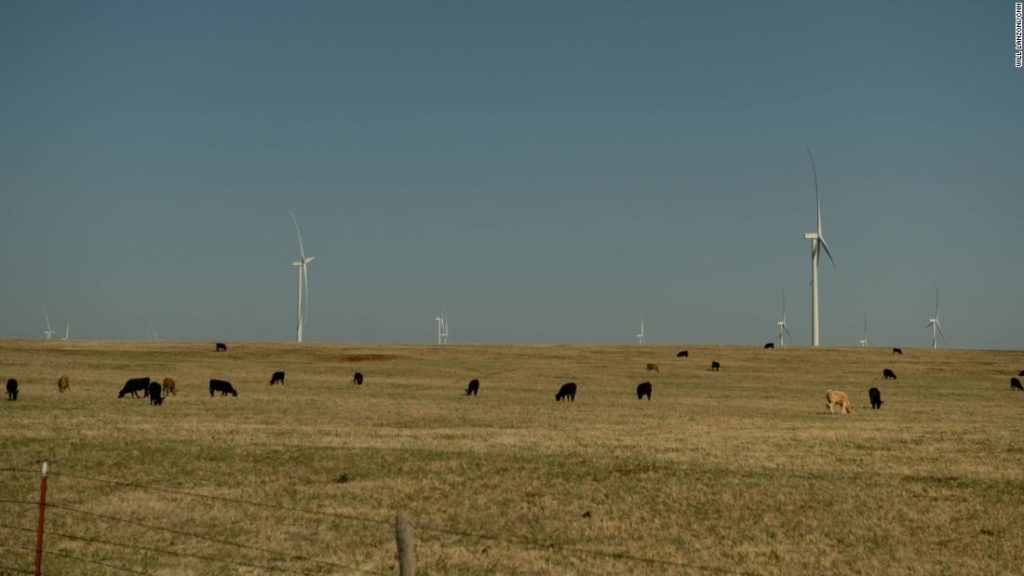By Ella Nilsen
Photos by Will Lanzoni
Data Visuals by John Keefe
WEATHERFORD, Oklahoma (CNN) Driving west from Oklahoma City to the outskirts of Weatherford, wind turbines don’t just dot the landscape; they dominate it.
From oil and gas booms and busts to heavy rains followed by drought, Oklahoma is no stranger to extremes. One constant is the wind, which is so bracingly strong that what locals call a breeze will send hats flying and whip open car doors suddenly.
“We’ve always had the wind in Oklahoma,” said Melva Dickey, a 91-year-old landowner and retired farmer.
Dickey leases her land to Ohio-based utility American Electric Power. With four turbines on her property, she — along with more than 300 other landowners — are harnessing the state’s most plentiful natural resource.

Melva Dickey.

Cows graze near Weatherford.
Far from the coasts, wind energy is thriving here in America’s heartland, on the vast plains of Oklahoma, Texas and Nebraska. Long an area devoted to oil and gas, Western Oklahoma is now home to one of the largest wind farms in the world.
The Traverse wind farm is made up of 356 turbines — each rising about 300 feet above the ground and spread out across 220,000 acres. The turbines tower over shimmering fields of wheat and give shade to cattle munching on hay. As they spin, they generate close to 1 gigawatt of energy; together with two other AEP-owned wind farms nearby, the trio will make enough electricity to power 440,000 homes each year.


